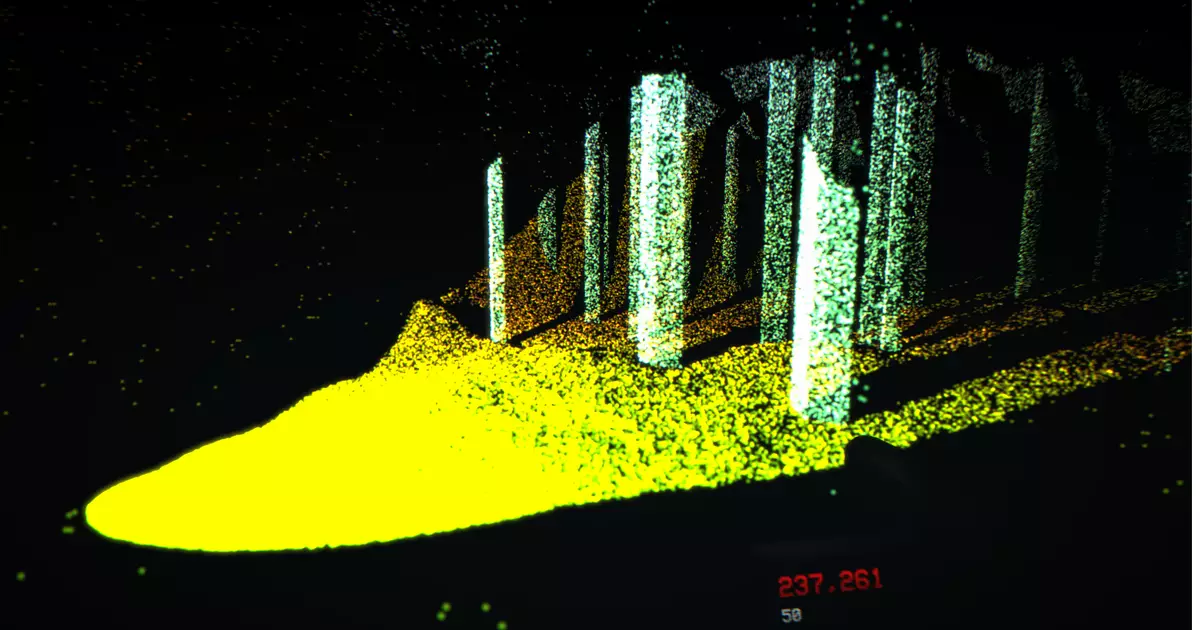LiDAR, short for “Light Detection and Ranging,” is a groundbreaking technology that employs laser pulses to draft intricate measurements of surrounding environments. It functions by emitting these laser beams toward an object, recording the time it takes for the light to bounce back. In its expansive application, LiDAR unveils the complexity of various landscapes, contributing to significant fields such as geography, forestry, and archaeology. However, its utility has begun to transcend practical boundaries, capturing the fascination of artists and game developers alike. As a medium, LiDAR paints a vibrant tapestry that can transform raw data into breath-taking visual experiences that blend art with science.
The Artful Evolution of the Horror Game
Enter the world of the LiDAR Exploration Program, an atmospheric horror game developed by KenForest. In this unique gaming experience, players wield a handheld LiDAR scanner, which breathes life into static landscapes as you traverse through eerie yet marvelous environments. Unlike the frantic pace of many classic horror games, LiDAR Exploration Program adopts a far more methodical approach, reminiscent of simulation titles like PowerWash Simulator. Players are invited not only to explore but to engage in a more contemplative experience with their surroundings.
The game’s premise provides an intriguing juxtaposition: while scanning the landscape, players can manifest 3D objects that fill the environment with radiating beauty, yet they quickly discover that these shapes can turn hollow and distorted when inspected from different angles. This clever design choice instills a sense of unease, as players confront the limitations of perception from their laser eyes—reminding them that some aspects of the world remain hidden from view, lurking just beyond comprehension.
A Delicate Balance of Curiosity and Fear
What is particularly captivating about LiDAR Exploration Program is its ability to elicit chills not from overt scares, but through subtle atmospheric nuances. The gameplay encourages a deep engagement with light and shadow, creating a delicate balance between curiosity and dread. This stands in stark contrast to the usual over-the-top jump scares commonplace in the horror genre, positioning the game as a truly unique entry.
As players meticulously adjust the width of their laser beams, they drill down into the intricacies of light interplay, scrutinizing how it dances across rugged terrains and glimmers through tree branches. These seemingly innocuous moments are interspersed with thrill, as the scanner’s light flickers to unveil haunting presences that lie hidden in the dark. The blend of methodical exploration and unexpected horror elements amplifies an experience that feels both artsy and treacherous.
Transforming the Landscape of Gaming
Furthermore, KenForest’s imaginative use of LiDAR in gaming also raises thought-provoking questions about the perception of reality within virtual settings. As players witness their fabricated environments shift from static models to interactive forms, a dialogue emerges between the player and their surroundings about the nature of creation and destruction. The game essentially becomes a modern-day canvas where players can drink in the beauty of nature and explore the consequences of what remains unseen—it’s a testament to how modern gaming can adopt scientific principles to stretch the imagination.
The inclusion of features like a top-down level map barely disrupts the haunting atmosphere, instead enriching the experience and allowing players to appreciate the intricacy of their findings without diminishing the underlying tension. This design decision not only offers a strategic gameplay element but also deepens emotional engagement, as players are compelled to reconcile vulnerability with artistic expression.
Rediscovering the Power of Light in Gaming
As art and science converge through titles like LiDAR Exploration Program, one cannot help but wish for a wider embrace of innovative concepts that challenge traditional gaming paradigms. The potential of light as a creative medium stands largely untapped in mainstream gaming. Through a thoughtful combination of technology, atmosphere, and understated storytelling, KenForest’s game represents a frontier in immersive experiences. Players are not merely passive consumers; they become artists of light and shadow, crafting narratives through their exploration while facing the inherent discomfort of understanding a world where not everything is as it initially appears.
In a landscape besieged by formulaic gameplay, the advent of delightful and contemplative titles like the LiDAR Exploration Program beckons to a future where the gaming experience can both enlighten and unsettle, forging deeper connections with players and the artistically crafted worlds they roam.


Leave a Reply